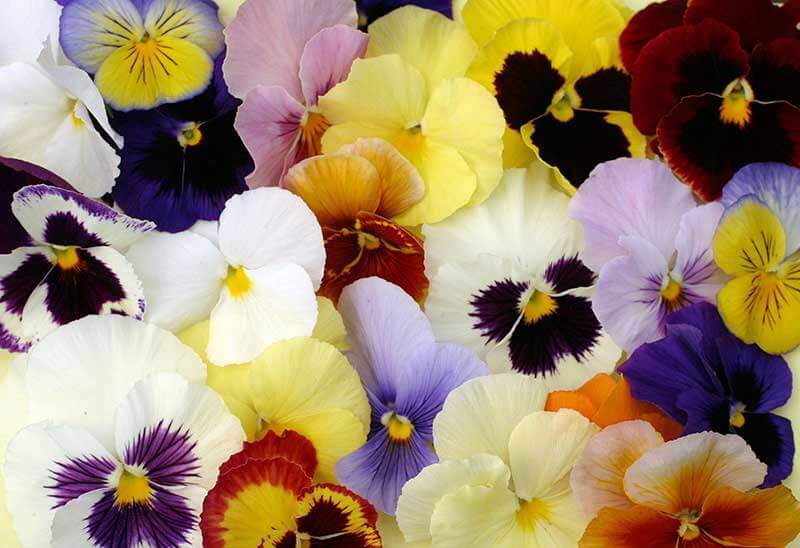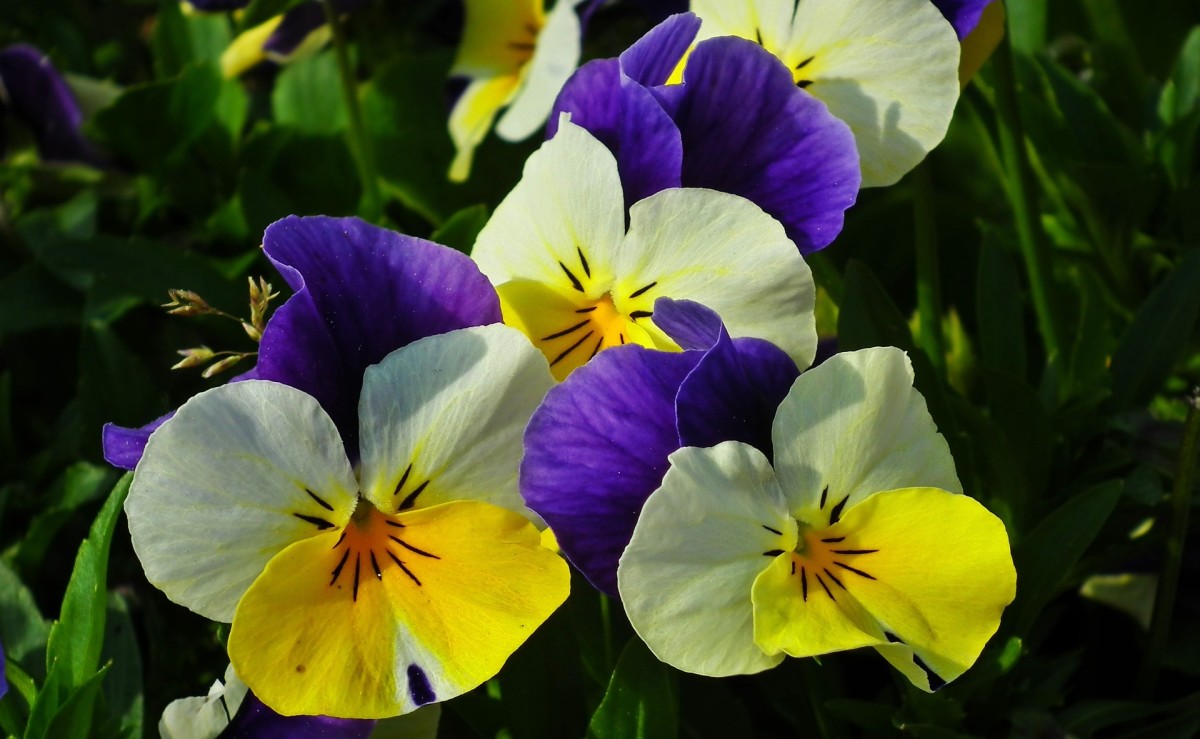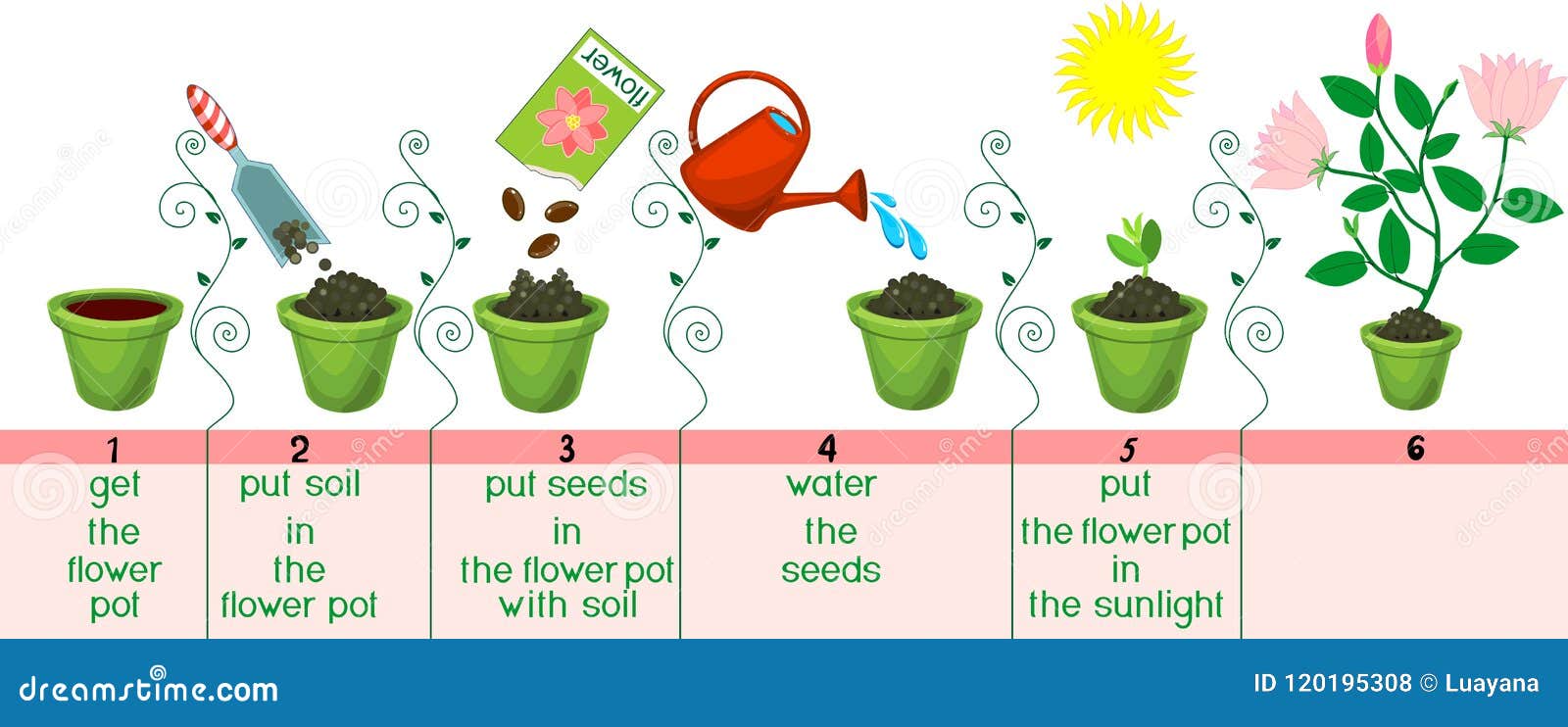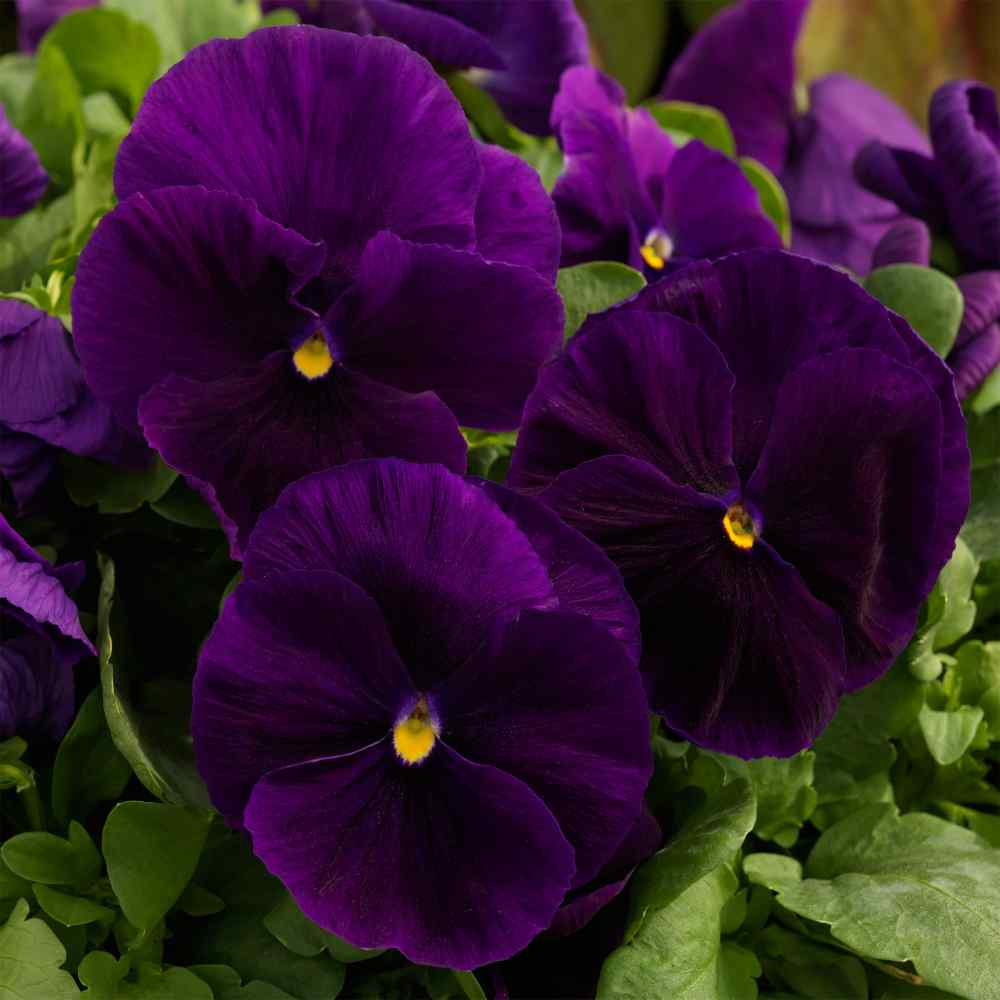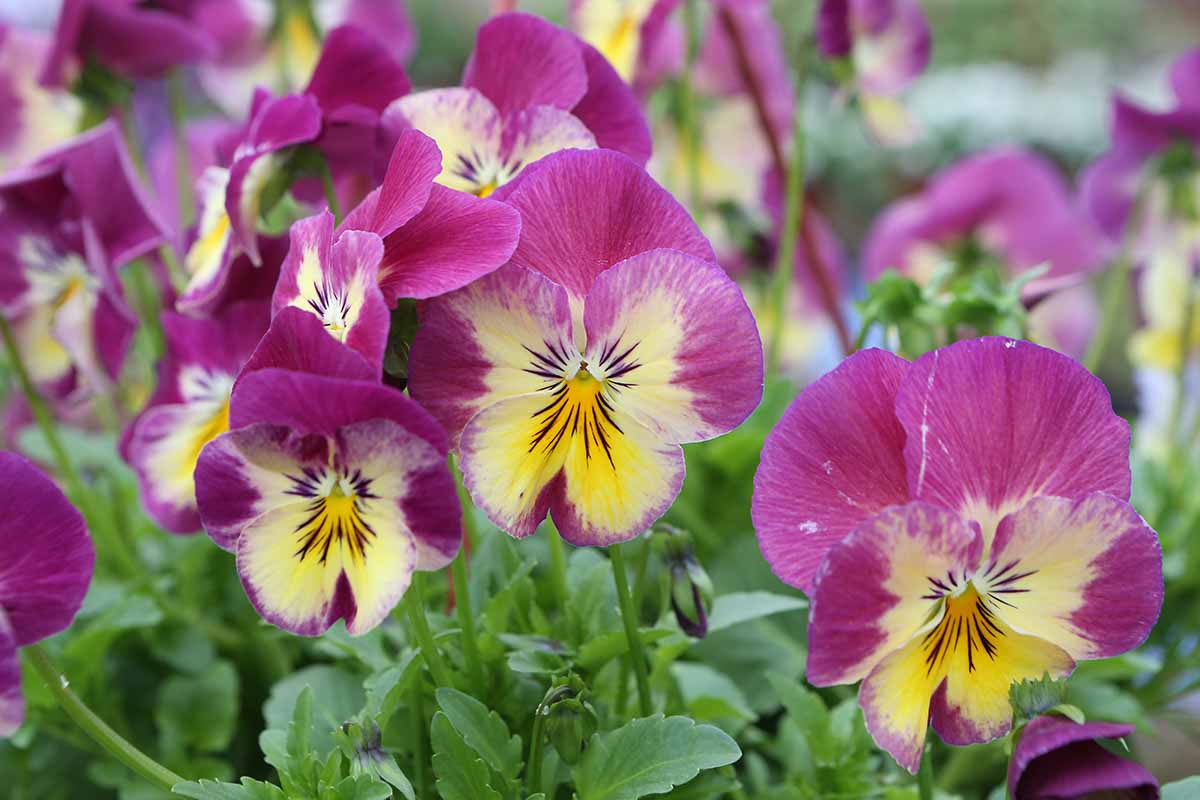Understanding Pansy Planting Seasons
Planting pansies at the right time is crucial for their growth and blooming. Temperature, daylight hours, and soil conditions all play a significant role in determining the optimal planting time for pansies. In general, pansies thrive in cooler temperatures and can tolerate light frosts, making them an excellent choice for early spring or fall gardens. However, the specific planting time varies depending on the region and climate.
In areas with mild winters, pansies can be planted in the fall or early winter, while in regions with harsh winters, it’s best to plant them in early spring. In areas with hot summers, pansies can be planted in the spring or fall, but not in the summer. Understanding the specific planting seasons for pansies in your area is essential to ensure their success.
When deciding when to plant pansies, it’s essential to consider the average frost dates for your area. In regions with late frosts, it’s best to wait until the soil has warmed up and the danger of frost has passed before planting. In areas with early frosts, pansies can be planted in the fall, about 8 to 10 weeks before the first frost.
Soil temperature is also a critical factor in determining the optimal planting time for pansies. Pansies prefer soil temperatures between 40°F and 70°F (4°C and 21°C). If the soil is too cold, pansies may not germinate or grow properly.
By understanding the specific planting seasons and conditions for pansies in your area, you can ensure their success and enjoy their beautiful blooms for months to come. Whether you’re a seasoned gardener or just starting out, planting pansies at the right time is key to their growth and blooming.
How to Choose the Best Time to Plant Pansies in Your Area
Determining the best time to plant pansies in your area requires careful consideration of several factors, including frost dates, soil temperature, and weather forecasts. To ensure successful pansy planting, it’s essential to check local weather conditions before planting.
Frost dates are a critical factor in determining when to plant pansies. In areas with late frosts, it’s best to wait until the soil has warmed up and the danger of frost has passed before planting. You can check the average frost dates for your area by consulting a local nursery or extension office. For example, if you live in an area with a last frost date of May 15, you can plant pansies in late April or early May.
Soil temperature is another crucial factor to consider when planting pansies. Pansies prefer soil temperatures between 40°F and 70°F (4°C and 21°C). You can check the soil temperature by inserting a thermometer into the soil or by using an online soil temperature guide. If the soil is too cold, pansies may not germinate or grow properly.
Weather forecasts can also help you determine the best time to plant pansies. Check the forecast for your area and avoid planting during periods of extreme weather, such as heavy rain or intense heat. It’s also a good idea to plant pansies during a period of calm weather, when the soil is moist but not waterlogged.
In addition to these factors, it’s also essential to consider the specific growing conditions in your area. For example, if you live in an area with hot summers, you may want to plant pansies in the spring or fall, when the weather is cooler. If you live in an area with mild winters, you can plant pansies in the fall or early winter.
By considering these factors and checking local weather conditions, you can determine the best time to plant pansies in your area and ensure successful growth and blooming. Remember to plant pansies at the right time, and you’ll be enjoying their beautiful blooms in no time.
Spring Pansy Planting: A Guide to Getting a Head Start
Planting pansies in early spring is an excellent way to get a head start on the growing season. The cooler temperatures and increased moisture of spring create ideal conditions for pansy growth and blooming. By planting pansies in early spring, you can enjoy their beautiful blooms for several weeks before the heat of summer sets in.
To prepare the soil for spring pansy planting, start by loosening the soil to a depth of about 8-10 inches. Add a 2-inch layer of compost or well-rotted manure to the soil to improve its fertility and drainage. Mix the compost or manure into the soil thoroughly, and then rake the soil to create a smooth, even surface.
When selecting pansy varieties for spring planting, choose those that are specifically bred for early spring bloom. These varieties will typically have larger flowers and more vibrant colors than those bred for fall or winter bloom. Some popular pansy varieties for spring planting include ‘Swiss Giant’, ‘Moulin Rouge’, and ‘Purple Topcoat’.
When planting pansies in the spring, be sure to space them about 6-8 inches apart. This will give them enough room to grow and bloom without becoming too crowded. Water the pansies thoroughly after planting, and then keep the soil consistently moist during the first few weeks after planting.
As the weather warms up in the spring, pansies will begin to bloom. To encourage more blooms, deadhead the pansies regularly by removing the spent flowers. This will help to promote more blooming and keep the plants looking their best.
By following these tips and guidelines, you can enjoy a beautiful display of pansy blooms in the spring. Whether you’re a seasoned gardener or just starting out, planting pansies in the spring is a great way to add some color and vibrancy to your garden.
Summer Pansy Planting: Tips for Success in Warm Weather
Planting pansies in the summer can be challenging, but with the right techniques and varieties, you can still enjoy a beautiful display of blooms. One of the main challenges of summer pansy planting is heat stress, which can cause the plants to become leggy and produce fewer flowers. To avoid this, choose heat-tolerant varieties such as ‘Summer Wave’ or ‘Heat Wave’.
Another challenge of summer pansy planting is dry soil. Pansies prefer well-draining soil that is consistently moist, but not waterlogged. To ensure the soil stays moist, mulch around the plants to retain moisture and suppress weeds. You can also use drip irrigation or soaker hoses to deliver water directly to the roots of the plants.
When planting pansies in the summer, it’s essential to choose a location that provides some shade, especially in warmer climates. Pansies can tolerate full sun, but they will perform better in partial shade, especially during the hottest part of the day.
In addition to choosing the right varieties and providing the right growing conditions, it’s also essential to maintain proper care and watering schedules. Water pansies regularly, but avoid overwatering, which can lead to root rot and other problems. Fertilize pansies regularly, using a balanced fertilizer that promotes healthy growth and blooming.
Some popular summer pansy varieties include ‘Summer Breeze’, ‘Heat Wave’, and ‘Sunset’. These varieties are bred to thrive in warm weather and can tolerate high temperatures and dry soil. By choosing the right varieties and following these tips, you can enjoy a beautiful display of pansy blooms all summer long.
Remember to deadhead pansies regularly to encourage more blooming and keep the plants looking their best. You can also use pansies as a cut flower, adding a pop of color to arrangements and bouquets.
Fall Pansy Planting: A Guide to Extending the Blooming Season
Planting pansies in the fall is an excellent way to extend the blooming season and add color to the garden during the cooler months. Pansies thrive in the cooler temperatures of fall, and with proper care, they can continue to bloom well into the winter.
To plant pansies in the fall, choose a location that receives full sun to partial shade. Pansies prefer well-draining soil that is rich in organic matter, so add a 2-inch layer of compost or well-rotted manure to the soil before planting.
Select pansy varieties that are specifically bred for fall bloom, such as ‘Fall Festival’ or ‘Autumn Leaves’. These varieties are designed to thrive in the cooler temperatures of fall and will produce more blooms than varieties bred for spring or summer bloom.
Plant pansies in the fall about 6-8 weeks before the first frost. This will give them enough time to establish themselves before the winter weather sets in. Space pansies about 6-8 inches apart, and water them thoroughly after planting.
To care for pansies in the fall, water them regularly, but avoid overwatering, which can lead to root rot and other problems. Fertilize pansies regularly, using a balanced fertilizer that promotes healthy growth and blooming.
One of the benefits of planting pansies in the fall is that they can continue to bloom well into the winter. To encourage this, deadhead pansies regularly, and provide them with protection from extreme weather conditions, such as frost and wind.
Some popular fall pansy varieties include ‘Fall Festival’, ‘Autumn Leaves’, and ‘Winter Wonder’. These varieties are bred to thrive in the cooler temperatures of fall and will produce more blooms than varieties bred for spring or summer bloom.
By planting pansies in the fall, you can enjoy a beautiful display of blooms well into the winter. With proper care and attention, pansies can thrive in the cooler temperatures of fall and provide a splash of color to the garden during the cooler months.
Winter Pansy Planting: Can You Plant Pansies in the Cold?
While pansies are typically thought of as a spring or fall crop, they can also be planted in the winter in certain regions. However, this requires careful consideration of the specific growing conditions and the use of specialized techniques.
In regions with mild winters, pansies can be planted directly in the ground during the winter months. However, in areas with harsh winters, it’s best to use cold frames, greenhouses, or indoor containers to protect the plants from extreme cold and wind.
When planting pansies in the winter, choose varieties that are specifically bred for cold tolerance, such as ‘Winter Flower’ or ‘Cold Snap’. These varieties are designed to thrive in cooler temperatures and can tolerate light frosts.
To care for pansies in the winter, provide them with protection from extreme weather conditions, such as frost and wind. Use a layer of mulch or straw to insulate the soil and retain moisture. Water pansies regularly, but avoid overwatering, which can lead to root rot and other problems.
In addition to using cold frames, greenhouses, or indoor containers, you can also use other techniques to extend the growing season for pansies in the winter. For example, you can use row covers or other types of frost protection to protect the plants from extreme cold.
Some popular winter pansy varieties include ‘Winter Flower’, ‘Cold Snap’, and ‘Frosty’. These varieties are bred to thrive in cooler temperatures and can tolerate light frosts.
By using the right techniques and choosing the right varieties, you can successfully plant pansies in the winter and enjoy their beautiful blooms during the colder months.
Pansy Planting Mistakes to Avoid
When planting pansies, it’s essential to avoid common mistakes that can lead to poor growth, low yields, and reduced blooming. By understanding these mistakes and taking steps to avoid them, you can ensure successful pansy planting and enjoy a beautiful display of blooms.
One of the most common mistakes to avoid when planting pansies is planting at the wrong time. Pansies are sensitive to temperature and daylight hours, and planting them at the wrong time can lead to poor growth and reduced blooming. To avoid this mistake, make sure to check the specific planting times for your region and climate.
Another mistake to avoid is inadequate soil preparation. Pansies prefer well-draining soil that is rich in organic matter, and failing to provide this can lead to poor growth and reduced blooming. To avoid this mistake, make sure to prepare the soil properly before planting, adding a 2-inch layer of compost or well-rotted manure.
Insufficient care is another common mistake to avoid when planting pansies. Pansies require regular watering, fertilization, and deadheading to thrive, and failing to provide this can lead to poor growth and reduced blooming. To avoid this mistake, make sure to provide regular care and attention to your pansies, including watering, fertilizing, and deadheading.
By avoiding these common mistakes, you can ensure successful pansy planting and enjoy a beautiful display of blooms. Remember to plant pansies at the right time, prepare the soil properly, and provide regular care and attention to ensure optimal growth and blooming.
Some other mistakes to avoid when planting pansies include:
- Planting pansies too close together, which can lead to overcrowding and reduced blooming.
- Failing to provide support for tall pansy varieties, which can lead to flopping and reduced blooming.
- Not providing enough sunlight for pansies, which can lead to poor growth and reduced blooming.
By avoiding these mistakes and following the tips and guidelines outlined in this article, you can ensure successful pansy planting and enjoy a beautiful display of blooms.
Conclusion: Timing is Everything for Pansy Planting
Planting pansies at the right time is crucial for their growth and blooming. By understanding the specific planting seasons and conditions for pansies in your area, you can ensure successful pansy planting and enjoy a beautiful display of blooms.
In this article, we’ve discussed the importance of planting pansies at the right time, including the impact of temperature, daylight hours, and soil conditions on their growth and blooming. We’ve also provided tips and guidelines for determining the best time to plant pansies in specific regions, including the use of frost dates, soil temperature, and weather forecasts.
We’ve also explored the benefits of planting pansies in different seasons, including spring, summer, fall, and winter. We’ve discussed the challenges of planting pansies in each season and provided guidance on how to select the right varieties, prepare the soil, and care for newly planted pansies.
Finally, we’ve discussed common mistakes to avoid when planting pansies, including planting at the wrong time, inadequate soil preparation, and insufficient care. By avoiding these mistakes and following the tips and guidelines outlined in this article, you can ensure successful pansy planting and enjoy a beautiful display of blooms.
So, when do you plant pansies? The answer depends on your specific climate and region. By experimenting with different planting times and varieties, you can find what works best for you and enjoy a beautiful display of pansy blooms throughout the year.
Here’s a final checklist of key considerations for successful pansy planting:
- Check the specific planting times for your region and climate.
- Prepare the soil properly before planting.
- Choose the right varieties for your specific climate and region.
- Provide regular care and attention, including watering, fertilizing, and deadheading.
- Avoid common mistakes, such as planting at the wrong time, inadequate soil preparation, and insufficient care.
By following these tips and guidelines, you can ensure successful pansy planting and enjoy a beautiful display of blooms throughout the year.


